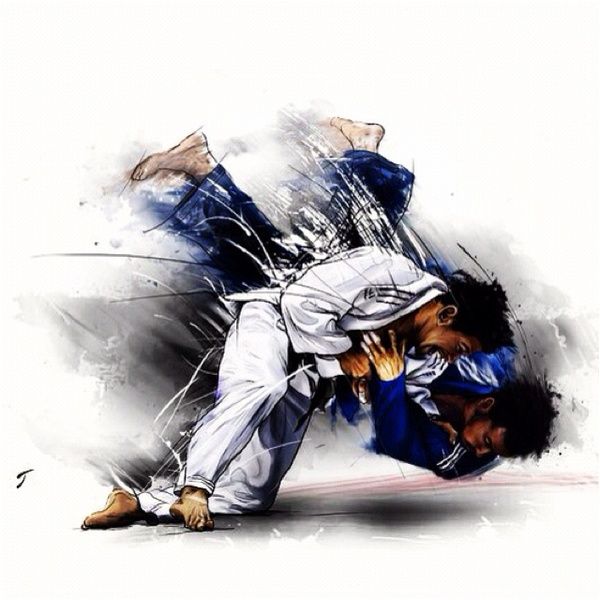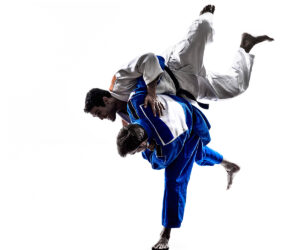Although Mike Myers makes constant (and highly effective) use of judo chops in the hilarious Austin Powers series, judo competition makes no use of strikes at all. The first Asian martial art to be included in the Olympics (1964), judo is now the opening sports event at the Games.
Judo is a highly technical sport and it can be difficult for the uninitiated to make sense of the myriad grips and positions involved. However, no one can deny that perfect judo throw is an exciting spectacle. Judo competition has three categories of scoring:
- Ippon – 1 full point. An ippon score immediately wins a match. Ippon can be scored in the following ways:
- A perfect throw whereby the opponent lands on the back
- A pin of 20 seconds
- A submission hold to which the opponent taps
- Wazari – 1/2 of full point. Two wazari scores equal an ippon and thus a win. A wazari is scored in the following ways:
- A near perfect throw, i.e. the opponent lands on his back or close to, but the thrower lacks full power or technique
- A pin of between 15 and 20 seconds
- Yuko – advantage. No amount of yuko scores ever equal a wazari or an ippon. Yuko scores are only tallied at the end of a fight if no wazari scores have been achieved. For example, in the course of a match competitor A scores 1 wazari and 1 yuko and competitor B scores 7 yukos; the former wins because a single wazari trumps all yuko scores. A yuko can be scored in the following ways:
- Any throw that results in a competitor falling on his side or anterior.
A judo competitor is called a judoka and all judokas wear a judogi or gi. The gi is an outfit consisting of thick cotton jacket and pants modelled on traditional Japanese attire and it is a weapon in itself. The extra space that the gi affords the judokas allows them to utilise greater than normal leverage, which can result in absolutely huge throws.
Weight is an asset in judo and competitions are divided into the weight classes. For both men and women, there are seven weight classes, starting from under 60kg (men) and under 48kg (women). The heaviest weight class for men is over 100kg, and for women over 78kg.
In terms of submission holds, judokas are limited to arm locks that attack the elbow and they may perform any type of choke. Most submissions can only be attempted when both judokas are on the ground; however, limited time for ground fighting is awarded after a failed throw attempt, usually only up to 10 seconds. Penalties are given for certain illegal holds and for wrestling style leg take down attacks.
The martial art of judo was originally developed by the Japanese polymath Jigoro Kano who synthesized various styles of jujutsu and worked on maximizing the efficiencies of traditional techniques. His style was formulated in the 1880s and was devastatingly effective. Judo influence spread overseas and its students included Theodore Roosevelt. By the time it was included in the 1964 Olympics it had gone global.
Judo is famous for its throwing techniques, some of which can bee seen in the highlight video below:
You are a judoka yourself then you can find a list of assorted Judo books on bidorbuy.








